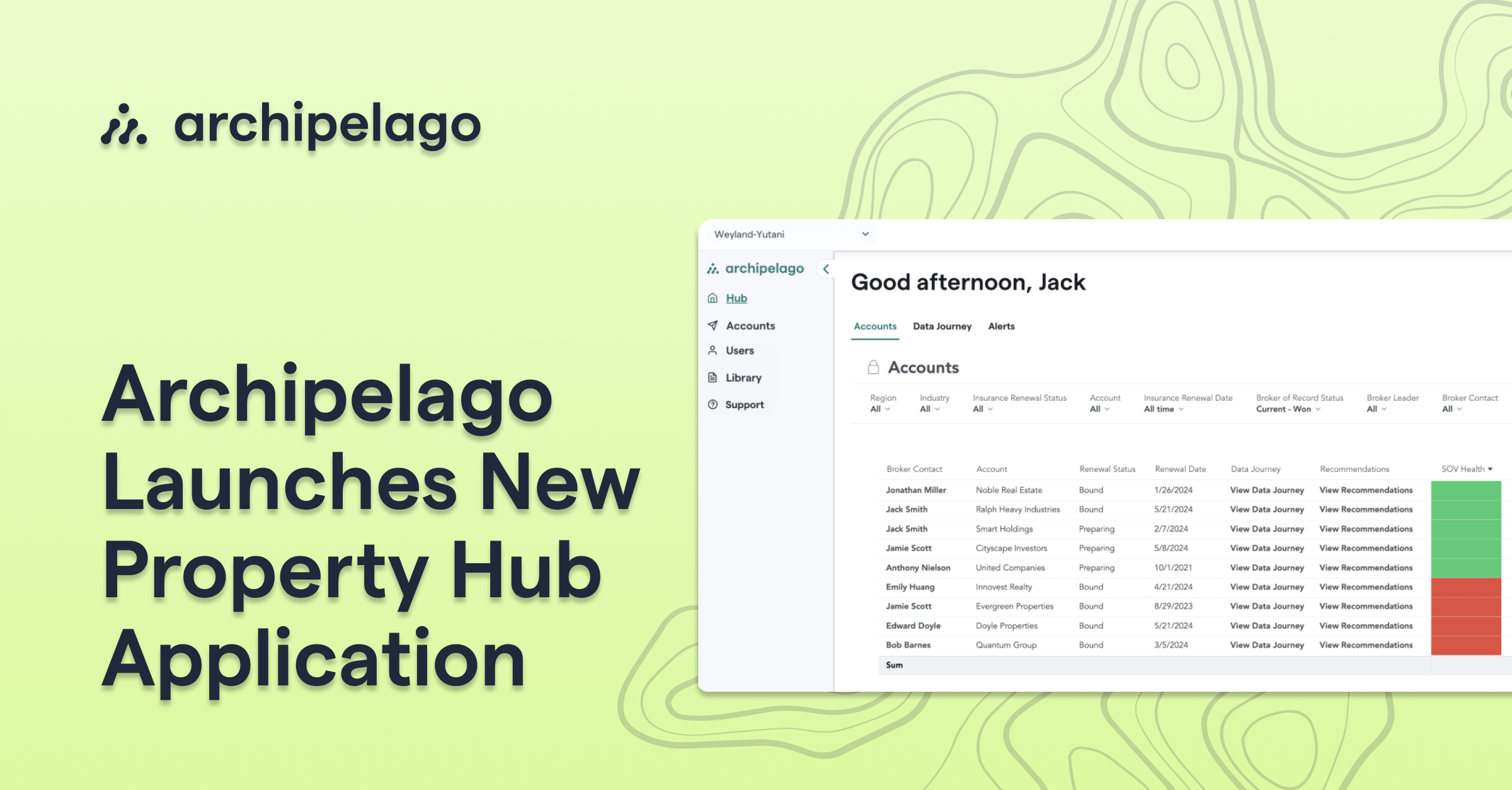How buildings tell their stories through integrated losses and exposures.
Every building has a story to tell. For some of the world’s most famous buildings, like the Tower of Pisa, White House, or Notre Dame Cathedral, their stories are well known and documented. We can even see some of the scars of what they have endured over the years. However, these stories are not readily available for your average commercial building.
Why does it matter?
For the organizations that own and run their businesses out of these properties, knowing the history of each building–when and how it was built, what it has been through–helps us to understand its future and to predict if it will stand the test of time.
If walls can talk, their owners and insurance carriers are particularly interested in what they have to say. In order to accurately estimate risk and price property insurance for commercial buildings, carriers must be armed with information:
- From the past - such as historical information on losses, improvements, construction materials
- Predicting the future - such as catastrophe models and predictive loss projections
Taking on risk is inherently risky. A complete view from the past to the present helps you best plan for the future. Knowledge gives you the power to make the best financial decisions and easily withstand market volatility.
Why exposure data is important to insurers
When assessing risk and pricing coverage, insurers focus on building characteristics and what goes on inside the building, such as its construction, occupancy, protection, and exposure (COPE). Each of these characteristics provides visibility into the use, hazards, geographical context, and makeup of the building that can drive property risk in both positive (reduced risk) and negative (increased risk) directions.
More granular exposure data with specific construction details susceptible to natural catastrophe events, including secondary modifiers, can be fed into catastrophe models to enable underwriters to quantify their likelihood and severity.
Why loss data is critical to understanding risk
The reason losses are so important to insurers is twofold: Losses that have happened may happen again, and the trend of losses over time provides a kind of report card into the risk management supporting the portfolio.
Carriers can’t survive if the risk they take on isn’t profitable over the long term, and while a certain percentage of losses are expected, there is an aversion to continuing to cover a losing portfolio or support risk management teams that treat property insurance like a maintenance contract.
Underwriters also need to know the cause of loss in each instance, which is typically delivered through a loss run spreadsheet covering a five-year period. Knowing the cause of a loss for each instance helps them to determine the likelihood of the losses occurring again in the future.
Why integrating exposure and loss data is so important
Context makes all the difference in evaluating risk. Providing the linkage between losses and property data clearly conveys the relationship between the exposure and losses that the portfolio has experienced. Underwriters know this and commit significant time and energy connecting information from the statement of values (SOV) and loss runs (often in spreadsheets) to attempt to make that connection and understand what story the portfolio is trying to tell.
For a common example from the perspective of an underwriter, imagine reviewing a property within a portfolio that has experienced a series of water damage losses in recent years caused by leaking pipes. Integrated loss and COPE data help the underwriter to determine the ongoing risk presented in the property, including understanding details of its construction and occupancy, and if anything has changed in terms of water damage mitigation by the risk management team.
Once underwriters have been able to review loss and exposure information together, they can begin to draw their own conclusions as to the risk of an individual property or the entire portfolio in aggregate.
Why it matters to property owners
Property owners and their brokers (by extension) should strongly consider spending more time integrating their exposure and loss data. Integrated risk data allows insurance buyers to tell the story they want the underwriters to hear and potentially shape or even rewrite the conclusions that underwriters would have otherwise determined independently.
Consider the four use cases presented below to see how losses can shape the narrative.
-
Attritional Losses
In the case of an attritional loss, such as water damage, it benefits the risk manager to make the underwriter aware of recent investments in monitored water detection devices (protections) that reduce the likelihood or the severity of the previous losses recurring. This is valuable to the risk manager and the broker because it reduces the likelihood of being penalized for a particular property in the renewal. It also shows the underwriter that proactive measures have been implemented; suggesting a level of risk management maturity.
-
Catastrophic Losses
In the context of catastrophe risk, imagine a California property that suffered seismic damage four years ago, and while the property remains in the portfolio and the loss is listed in the loss run, significant investments have been made to the building (such as seismic bracing) to prevent damage from occurring again with a similar seismic event. Again, this is something that the risk manager would want the underwriter to know when reviewing the submission and to potentially factor into modeling.
-
Losses Impacted by Portfolio Changes
Changes in a company’s portfolio are yet another opportunity to bring losses into context. If the property associated with the water damage losses or the cat exposed property has been sold (disposed of) and is no longer part of the portfolio, the risk manager benefits from guiding the underwriter to quickly understand how these changes impact the perceived risk of the portfolio.
-
Losses for Large, High-Value Portfolios
Showcasing exposure data in concert with loss data informs underwriters as to how risk management efforts are addressing an evolving portfolio. This saves an underwriter time and energy as they no longer need to conduct their own research. For example, a multi-billion dollar portfolio with hundreds of properties will likely have a substantial loss run. However, if that loss run is positioned within the portfolio metrics, those losses provide greater context with less effort. Making the submission easier to evaluate could improve the likelihood of carrier participation, in addition to the benefits listed previously.
Linking losses with exposures is a risk management best practice even outside of insurance procurement for the organization internally. Seeing the linkage between the history and future risk better informs risk management teams on risk transfer, as mentioned, but also on risk retention, risk control, and risk avoidance.
Help your buildings tell the whole story
We never know exactly what the future will hold, but it’s inevitable that at some point, our commercial buildings will encounter a catastrophic event, perhaps through climate change, or something else unforeseen. To preserve our structures along with the people and organizations they serve and represent, we can work to more adequately manage the risks they face. And while the walls may not be able to talk to us directly, with diligence and good data, we can give them a voice.
Want to know what your walls are saying?
At Archipelago, we’re focused on transforming how commercial property owners, brokers, and carriers manage and use property data. Book a personalized demo here to learn more.
Share this
You May Also Like
These Related Stories

Where Property Insurance Buyers Are Headed: A Paradigm Shift

On Common Ground: The Journey to $7T of TIV and Beyond
